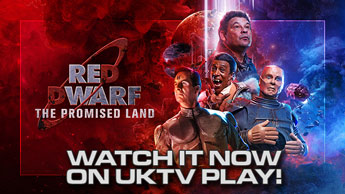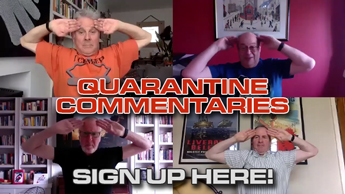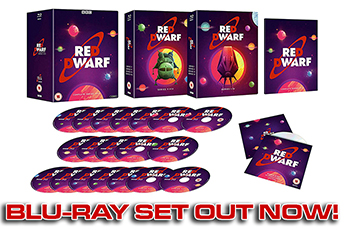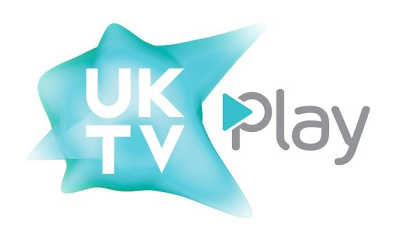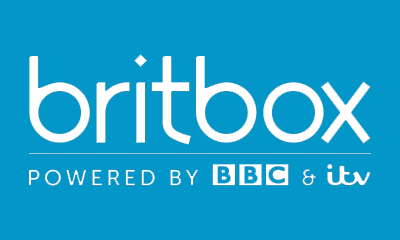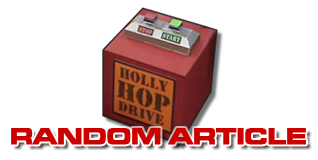Give Us Some Credit
Breaking down Red Dwarf's opening and closing sequences
13 May, 2016
You only get one chance to make a first impression, or so they say; and for a TV show, that means that the opening title and credits sequence can be one of the most important elements to get right. Over the years, Red Dwarf has had ten different chances, one for each series, to catch the eye and present the possibility of an exciting or intriguing programme to new eyes - and so in advance of whatever Series XI ends up having to offer us, here's a run-down of how those all-important opening sequences have played out in the past. And for good measure, we've looked at the closing credits sequences too!

One important weapon Red Dwarf has always had in its locker is that incredibly memorable theme tune, composed by Howard Goodall and sung (over the closing credits, at least) by Jenna Russell. But in the early series, the famous fast-paced opening version is nowhere to be seen. Instead, Series I begins with an ominous, looming shot of Red Dwarf itself, while a sombre and imposing musical cue plays out. Stylistically it owes a lot to several of Red Dwarf's noted influences, movies such as Dark Star and Silent Running as well as the famous 2001: A Space Odyssey. And there's a hugely economical piece of storytelling in quickly getting across the size of the ship by showing Lister painting a huge red wall that turns out to be only the "F" on the ship's nameplate.

With the exception of The End, which takes us straight into the action, each episode in Series I opens with an introductory speech by Holly that quickly sums up the premise of the show - before getting in a quick joke to make clear that, yes, this is an actual sitcom you're watching. The episode title cards, meanwhile, are a simple white text in the show's standard Microgramma font. This font is again deployed over the closing credits, which play out over a beautiful, swooping pan across the entirety of the ship - and are scored, of course, by the "proper" theme song.

Although it's not always immediately apparent, it's worth noting that the apparently non-sequitur lyrics about lying "shipwrecked and comatose" among "goldfish shoals" are actually entirely in keeping with one of the show's earliest themes: that is, Lister's desire to retire to a beach on Fiji. When you understand that Goodall was writing from the character's first-person perspective, everything suddenly makes a whole lot more sense.
The closing credits are standardised throughout the first two series, with just a couple of exceptions: Future Echoes has its final gag play out behind the scrolling text, as the Polaroid photo of Future Lister holding the babies Jim and Bexley develops in real-time. This was done without any sort of visual effects trickery: but simply by holding up an actual Polaroid and allowing it to develop on camera, then simply adjusting the speed of the footage to match the length of the credits sequence. And Waiting For God sees the whole credit roll temporarily paused, for Rimmer to deliver his "IT'S A SMEGGING GARBAGE POD!" punchline.

The opening theme and ship fly-by sequence are identical for Series II, but there are tweaks to what follows. Holly's introductions are tweaked for brevity, and there's a different piece of incidental music underneath them. There's also a change to how the episode titles are displayed: the text is now red, and stretched to fill the entire screen, with Rob and Doug's writing credit on a separate frame rather than directly underneath.

But the biggest change that Series II makes is to have an episode without an opening title sequence at all: Parallel Universe opens instead with the famous Tongue Tied song and dance number. On original broadcast (and, as such, on the DVD), this meant that neither the name of the show, the title of the episode nor the names of the writers would appear at the beginning - although the title was later added to the VHS release.
Of course, the tweaks made for Series II are nothing compared to the wholesale changes we would find for Series III. After Backwards opens with a Star Wars-spoofing introductory text spiel, designed to serve both as a genuine explanation for the cosmetic and character changes between series, and as an additional joke by scrolling too fast for anyone (in those pre-DVD days) to actually read, we launch into a brand new, and very different, opening sequence.

It starts with a standard model shot of Red Dwarf, leading you to believe that perhaps it'll be similar to the early series opening. But then there's an almighty engine roar, and an upbeat, guitar-led instrumental version of the closing song plays. It's the accompaniment to a style of opening montage that would become the standard format for the show for every subsequent series: a fast-paced montage, with a combination of comedic and action-led shots that aptly get across the new style and tone of the show. Every episode is represented, but some more than others: Timeslides and The Last Day only appear once, while there are four moments from Polymorph. And, oddly, a brief clip of Thanks for the Memory (Lister and Cat in their spacesuits) makes it in there! And it's all capped off with the show finally getting a proper logo.
The episode titles, meanwhile, are given yet another style. When the opening sequence finishes, there's first a "Written by Rob Grant and Doug Naylor" credit in a similar white/red style to the closing credits. Only then does the episode title appear, superimposed in red Microgramma over the opening shot (and no longer stretched to fill).

Series III also makes a change to the closing sequence. The visuals are the same, but across all six episodes a slightly different mix of the theme song is used, complete with an alternative take of Jenna Russell's vocals. This version would recur occasionally (but not consistently!) in some later series. And there's one other episode aside from Backwards that features an unusual opening: Polymorph begins with a warning that "This week's Red Dwarf contains scenes which are unsuitable for younger viewers and people of a nervous disposition". Although this appears to have been for comedic effect more than anything!
Series IV follows a similar pattern to Series III, although while the initial shot of the ship remains, the engine roar noise is gone. The new opening montage features a higher number of clips than its predecessor, with a few interesting quirks among them. Once again, every episode is represented - although this time, Meltdown is only seen via the stock footage of the mechanical birds. And again, there's footage from a previous series in there - this time, three shots of Starbug crashing that originate from Marooned and Bodyswap.

But perhaps most intriguingly, the sequence features a shot that doesn't actually appear in an episode: the second clip is a reaction shot of Rimmer in Starbug that is actually taken from a different camera angle to the one that is seen in Camille. As for the title and credits, the writers' credit is identical to Series III, but the episode titles now scroll horizontally across the opening scene, in a new and quite generic sans-serif font.

For its first four episodes, Series IV reverts to the "original" version of the closing song - but plays it over a redesigned credits sequence. The ship pass is still present and correct, but the credits themselves are in a new font, Copperplate Gothic - with names and roles separated by purple lines. But with the final two episodes, we get the closing music played with for comic effect for the first time: Dimension Jump features Rimmer's Hammond organ version of the theme, while Meltdown features vocals by Clayton Mark as Elvis.

As the most action-packed series yet, it's perhaps unsurprising that Series V has the most fast-paced montage so far too, with an increased number of clips appearing at a quicker rate. Terrorform and Demons & Angels are the best-represented by the new opening, which is particularly heavy on explosions and violence. There are also, oddly, dark red horizontal bars added to the top and bottom of the screen, giving the sequence a "letterbox" effect. And the sequence ends with a new version of the famous "oval" logo - with the lettering now switched to a serif, Times-esque font, and no bordering circle.

The episode titles are changed for V, too. They still scroll over the opening scene, but they vary in style on an episode-to-episode basis - sometimes in Copperplate, but sometimes in a more generic font, and in a variety of different colours. And Back to Reality doesn't scroll the title at all! For the first time, meanwhile, the writers' credit also appears over the episode proper - back to appearing after the title, it's also now in Copperplate, making V the first series in which Microgramma doesn't appear in any onscreen text.

Finally, the changes also continue into the closing credits: the beloved ship swoop is gone (perhaps marking the decreased reliance on the titular ship in this series), replaced by an animated starfield. And just in case you're interested in really picky detail, the purple lines have become blue.

Unsurprisingly, with Red Dwarf absent entirely for Series VI, it's also missing from the opening title sequence for the first time. Instead, the opening shot is of Starbug, before we go into another fast montage that, while again heavy on action, plays up the comic elements a little more. Emohawk: Polymorph II is by far the best-represented episode, while Psirens only gets a single clip. The episode titles no longer scroll, but simply appear onscreen - still in Copperplate, but with additional blue lines to match those in the closing credits.

The text of those closing credits is similar to that of Series V - but the background starfield has changed to a more purple, and static, nebula. The only exceptions are Legion - which, oddly, has a blue starfield instead - and Gunmen of the Apocalypse, which plays a special "Western"-themed version of the theme over footage of Starbug escaping into the sunset. It's also worth noting that both Series V and VI alternate which version of the closing song they use - sometimes playing the original, but in some instances opting for the alternate mix.

It's all change for Series VII, to match the new production style after several years away. An idea first mooted but ultimately abandoned during Series V, a pre-titles sequence, makes its first appearance in Tikka to Ride, in the shape of Lister's expository explanation of the Series VI cliffhanger - after which, we go into the by-now-standard montage. The most striking difference is the new show title card, in which a giant "VII" is cut out of a black screen, with a swooping shot of Starbug behind it. This was the first time a series would actually number itself onscreen.

To reflect the changes in writing staff, there's now a "Created by" credit immediately after the titles, before the episode title itself and a writing credit. These are all displayed in a simple Times font - which itself carries over to the closing credits. These credits play out over another starfield backdrop, this time predominantly black with a bit of blue.

The closing sequence remains consistent throughout Series VII, but the openings vary hugely depending on circumstance. Stoke Me A Clipper, like Tikka, has a pre-credits scene - the "Ace Rimmer James Bond" sequence meaning it's almost five minutes before the opening titles start - and Nanarchy opens for the first time ever with a "Previously on Red Dwarf" recap. But it's Ouroboros and Duct Soup that are the strangest, both opening without a title sequence. Unlike Parallel Universe, this was simply for time reasons rather than to allow for something else; but while Duct Soup at least has the "VII" title card, Ouroboros simply throws the viewer in completely cold. Fortunately, the "Created by" credit also features the show's logo, so at least Red Dwarf is still named somewhere!

In between the seventh and eighth series, the first three series were re-released as part of the Remastered project - and with this, came entirely new opening and closing sequences. The new opening titles are actually (with one exception) consistent across all three series: they open with a re-filmed version of the "Lister painting" sequence, with the I-II opening music; before a smash cut into the faster-paced opening music, and a standard-style montage. There are fewer episodes shown than before, however, mixed in among several clips of the new CGI ship effects - from across the three series, we get clips of Future Echoes, Queeg (three times!), Kryten, Polymorph and The Last Day. There's also a slight change for Series III, to account for Hattie Hayridge replacing Norman Lovett: the shot of the latter from Queeg is replaced by one of the former from White Hole.

The Series V-onwards logo is then used, before an entirely new style of title and credit are overlaid onto the opening scene: first the "Created by" (in Times), then the episode title (good old Microgramma) with an added "Re-Mastered" logo, and finally the writing credit in Times again. And finally, the closing credits feature a CGI recreation of the classic ship pass, with names scrolled in Times.

Unlike its predecessor, Series VIII doesn't open with a recap - it's just straight in with the new title sequence, which for the first time doesn't have an establishing ship shot, but instead opens with the explosive Starbug crash in the hangar. The rest of the montage is again similar in style to those before it, with one exception - only seven of the eight episodes make appearances, meaning that Cassandra is the first episode since Series III not to be represented in any way by a title sequence. The montage then ends with the show's logo and series number - the latter this time represented by animated chalk lines, reflecting the prison setting of the series. Episode title and writing credits are similar to VII, just tweaked a little bit; as are the closing credits, which have the same Times font but this time play out over a montage of different starfields.

Back when Red Dwarf first started, it was generally not the norm in television for actors' names to appear in opening title sequences. But by the time Back to Earth came around, significantly more UK shows had adopted what was traditionally more of an American practice. As such, the title sequence for the three special episodes followed suit: combining a traditional Dwarf-style montage (with clips from all three episodes that somehow managed not to spoil the latter part of the plot!) with the addition of Chris, Craig, Danny and Robert's names. And for the first time, too, the title of the special along with writer Doug Naylor's name also appeared as part of the opening sequence, rather than after it.

The Back to Earth closing credits, meanwhile, were similarly a mixture of old and new. Unlike any before, rather than scrolling up the screen the list was presented as a succession of pages - although this was altered for the home release "Director's Cut" to a scrolling list more befitting the edited special's movie-like nature. Either way, they were still presented in the by-now-standard-once-more Microgramma.

And so to Series X, which again kept the new standard of adding the actors' names in Microgramma to a montage sequence made up of clips from all six episodes. Cleverly, the explosive sequence that was used to greet the arrival of the RDX logo was digitally altered to exclude any visibility of the Simulant ship - perhaps cheekily generating speculation among fans that it was an exploding Red Dwarf that Blue Midget was flying away from?

The episode titles, meanwhile, took on a deliberately retro feel - displayed in an enlarged red Microgramma, not unlike Series II, but with a slight slant that recalled Series V. And in a neat little twist, the title card for Lemons was in yellow, rather than red.

But it was the closing credits that really brought back a deliberately retro feel: not only were they once again in the classic font, but they even had the same red and white combination as originally seen in the first three series of the show. The intent had even been to play them over a newly-filmed flyover of the current version of the model, but this proved impractical and so a Series V-style starfield was employed instead.

While the opening sequences have varied considerably over the years, as we've seen, they've always remained distinctive and memorable - effectively drawing in the viewer with a heads up as to the style and tone of the show they're about to see. And we can't wait to see, later this year, how the Series XI opening will tease and excite us in a similar fashion...
Watch all the credits sequences for yourself by checking out Red Dwarf streaming and downloads!

